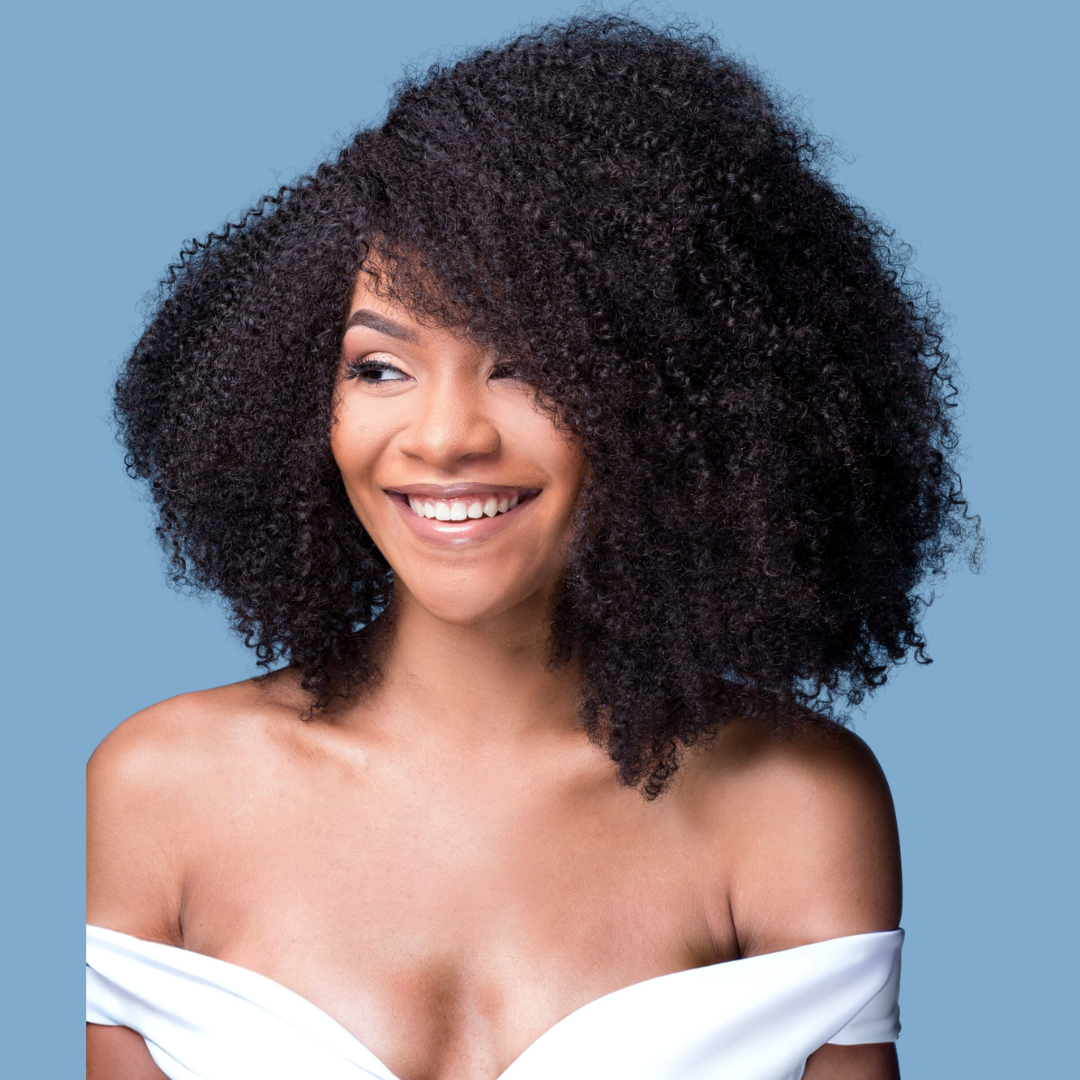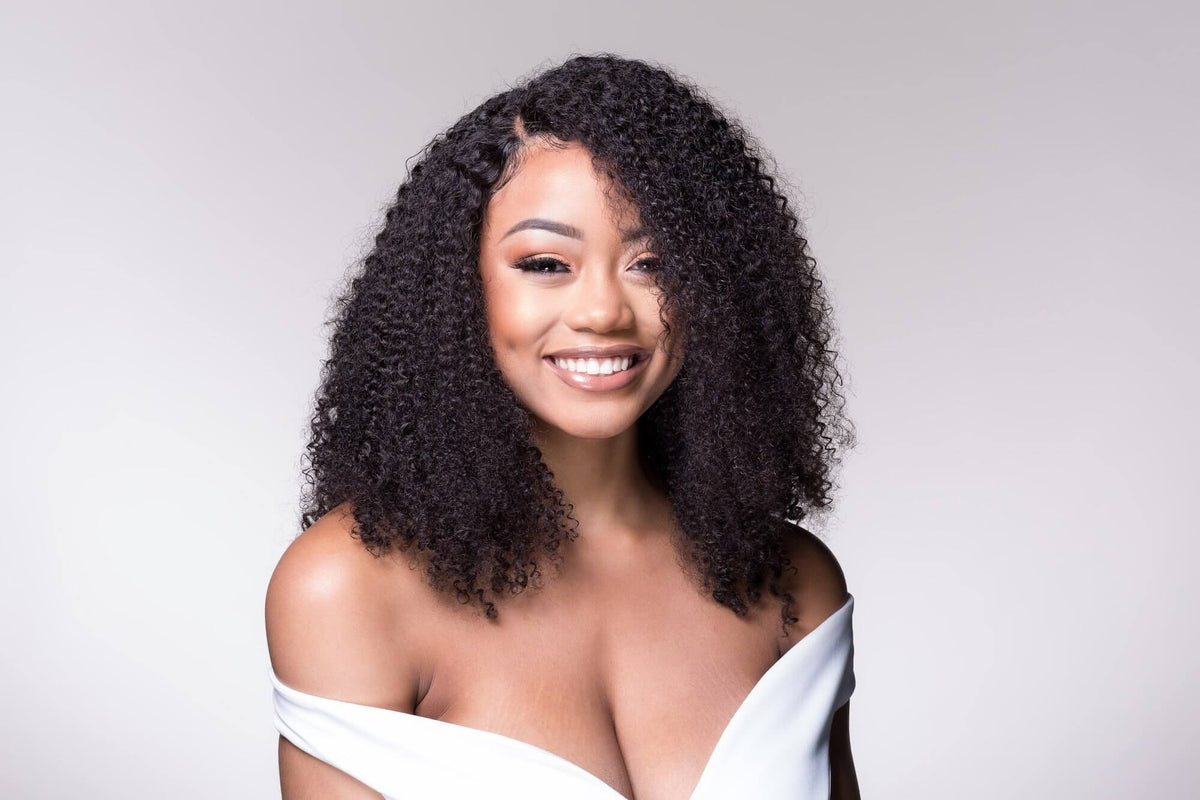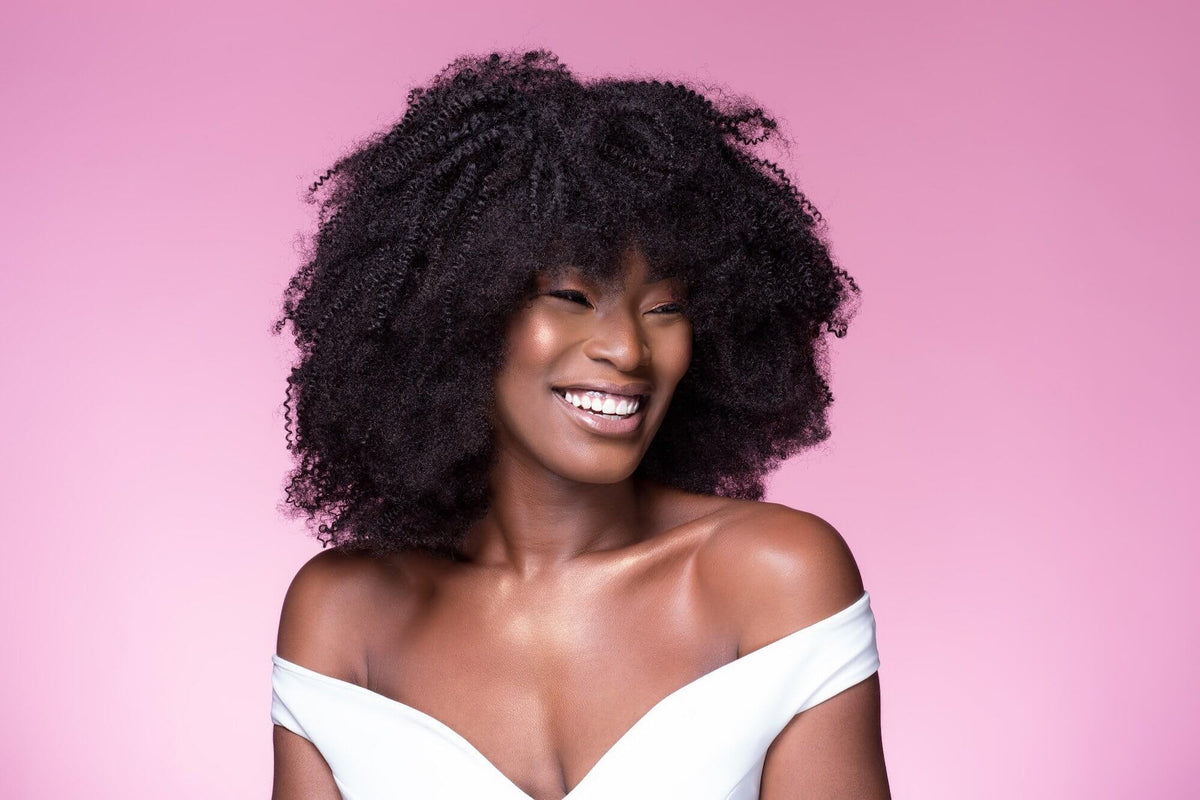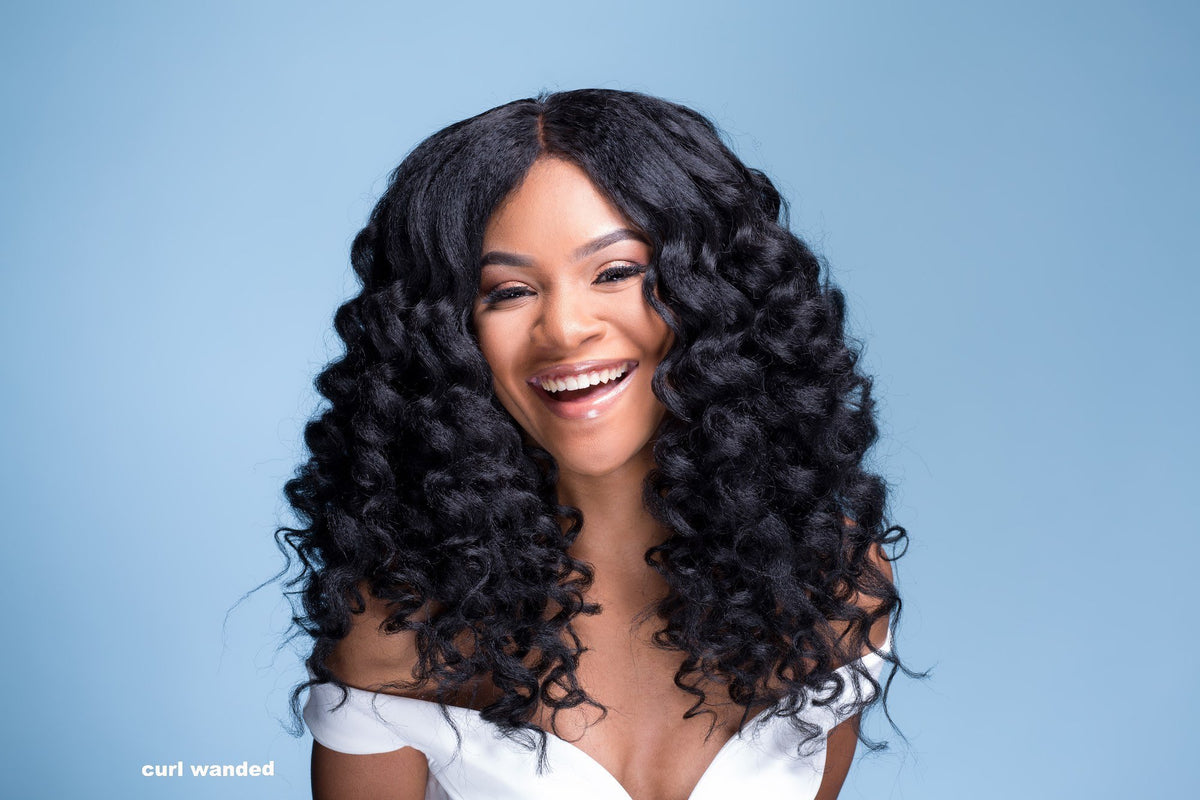
Natural looking hair extensions are a healthy way to protect your hair from the elements while also supporting your hair’s growth. Hair extensions are a favorite because they add volume and length, as well as give you confidence as you transition to natural hair styles. Queens who choose to wear extensions face the challenge of maintaining their natural crowns while also caring for their hair extensions. In this post we talk about the best practices for caring for your natural looking hair extensions and natural crown effectively.
Types of Extensions
Remy and yaki hair extensions are two types of hair commonly used for hair extensions, wigs, and hair pieces. Although both are hair extensions one refers to the hair texture style while the other refers to the origin of the hair itself.
What is Remy Hair?
Remy hair refers to the origin of the hair. When a hair extension is labeled “remy” or “remi” it means that the extensions come from a single human donor. Most remy hair harvesting takes place on the continent of Asia and in the country of India. However, some hair donors are located in China. When remy hair extensions are harvesting the hair is cut in one direction with a primary goal of keeping the cuticle in place to sustain the quality of the hair. Remy hair is popular because of its quality and human hair characteristics.
It tangles less, lays more naturally, resists shedding, and can withstand heat. It is also known for being amenable to style choices such as highlighting or curling.
Hair extensions that are not marked as remy may be the hair of many donors and the cuticles are not longer visible.
What is Yaki Hair?
Yaki hair refers to the general texture of the hair extensions. It is available in a remy or non-remy bundle. Yaki styled hair extensions resembles hair from those of African descent and it is available as kinky yaki, kinky curl, regular yaki, straight yaki, or silky straight yaki. Straight yaki hair extensions resemble chemically, relaxed hair of types 4B and 4C.
How to Care for Natural Looking Hair Extensions
Proper care of your natural looking hair extensions is a simple way to protect your beauty investment. Caring for your extensions is vital for styling and longevity. Failure to properly care for your extensions enhances the risk for snarls, tangles, excessive shedding, snapping, and dull appearances. To keep your hair extensions looking healthy, manageable and gorgeous consider these simple tips.
Wash your hair extensions with sulfate free shampoos. Sulfate shampoos can strip your extensions, making them more vulnerable to dryness and yes, even snapping, or breakage. Use natural oils to seal in moisture and to manage fly aways.
Only brush your hair when it is wet or moist to prevent damage. Separate tangles and knots using your fingers rather than a comb or brush to avoid excessive manipulation. Finally, avoid excessive use of heat and unnecessary styling.
Maintaining Your Natural Hair While Wearing Extensions
Caring for your natural hair while wearing hair extensions is critical to the health of your maintaining your crown. Remember that maintaining the health of your natural hair style is just as important as the upkeep of your hair extensions. Here are five tips to consider when wearing natural hair beneath your extensions or as “add ins”.
Establish a Hair Care Regimen
Develop a hair care regimen for your natural hair while wearing extensions. Hair maintenance activities should take place two to three times per week for the duration of your extensions lifecycle. Your hair care regimen may include a L.O.C. method or simply adding a leave-in conditioner to your hair every night.
Care for Your Scalp While Wearing Extensions
Your natural hair care maintenance routine should include a scalp regimen as well. The goal of this scalp regimen is to keep your scalp moisturized. Dry scalp boosts the risk of breakage at the root. Dry scalp has also been attributed to dandruff or scalp infections. A moisturizing oil such as olive oil can be useful in reducing the chances for dry scalp. If you have an itchy scalp, consider a peppermint oil and an olive oil mix application. Using an applicator bottle to ensure complete and direct application to your scalp.
Moisturize Your Natural Hair While Wearing Extensions
Always take steps to moisturize your natural crown. Moisturizing your hair while wearing extensions is imperative to reduce the possibility of dryness which can contribute to hair breakage. Ideally, you want to moisturize your root and the exposed hair that is nearest the scalp to seal in moisture and stimulate growth.
Leave-in conditioners are an excellent moisturizing product, but so are scalp and hair moisturizing oils. Many natural oils do a magnificent job of moisturizing hair. A few examples of moisturizing oils include olive oil, argan oil, Jamaican Black Castor oil, and jojoba oil.
When oiling your hair and scalp, remember to separate any leave-out hair from your extensions. Next, lift your tracks to apply oil to the scalp and hair nearest the root. For best results, moisturize your hair and scalp in the morning. Be careful not to oversaturate your scalp and hair because this can cause your extensions to tangle.
For leave-out hair, remember to apply a moisturizing oil to sustain the health of this hair as well, and most importantly, do not forget to protect and take care of your edges.
Clean Your Scalp and Hair While Wearing Extensions
Clean your hair and scalp to reduce oil buildup on both your natural hair and your extensions. Excess dirt and product buildup can contribute to breakage and odors. There are a variety of best practices for keeping hair clean while wearing extensions. Explore your options and consider water free shampoos.
Application of a scalp cleansing shampoo can be very useful for keeping your scalp clean beneath extensions. This process involves the use of a damp hand towel and a tiny amount of shampoo.
Wet your cloth, then apply a dime size amount of shampoo. Lifting each track, gently use it to clean the scalp and hair closest to the scalp to remove dirt and hair products. Next, use a damp cloth remove the shampoo.
Apply oil to seal the moisture. Remember to ensure that you are completely removing dirt, product buildup, and the shampoo/conditioner products. You should repeat this process two to three times per week.
For leave-out hair, follow your regular wash and conditioning process. This portion of the hair is often the dirtiest due to excessive product use. Do not neglect this part of your hair to ensure your protect your crown. Wash, condition, and seal in moisture with your oil of choice.
Washing Your Hair While Wearing Extensions
Should you wash your hair while wearing extensions? If you decide to pursue a deeper, saturating wash and conditioning process, you will want to choose shampoos and conditioners that work best for the extensions you are wearing and one that is also nourishing to your scalp and your braided hair beneath your extensions.
This step will help to ensure that natural hair that is in braids does not become dry and susceptible to dandruff or scalp infections. Always ensure that your hair beneath your weave is completely dry following shampoo. Failure to allow hair beneath the extensions to adequately dry can cause hair to become malodorous, matted and increase the risk of breakage.
Caring for your natural hair while wearing extensions becomes easier with time. Once you settle on a routine that protects and maintains your natural crown the maintenance of your hair and extensions is simplified. Also remember to take care of your natural hair between wearing extensions as well. Trim your ends, deep condition and always take a little time to infuse hydration into those natural locks!



